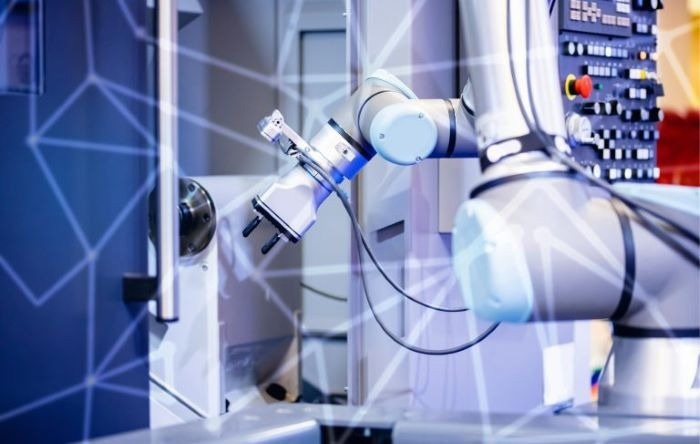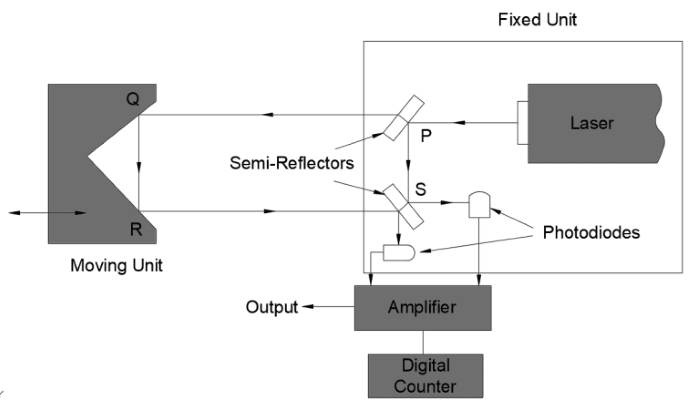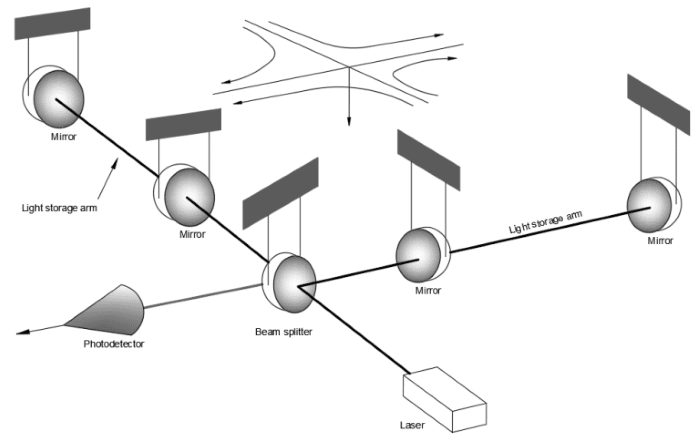Laser metrology involves using lasers to measure and test equipment. It is a dynamic variety of approaches that facilitates rapid, highly precise, contact-free assessments and is key in process oversight and quality control. Fields that depend on laser metrology include:
- Aerospace quality control
- Automotive engineering
- Medical device manufacturing
- Semiconductor fabrication
Laser metrology is additionally utilized in scientific research, for example, in exploring nanoscale structures or elucidating quantum phenomena.
Forms of Laser Metrology
Laser metrology comes in various forms. Optical frequency metrology with frequency comb lasers is utilized in physics research to accurately assess the properties of calculable atoms and molecules.

Laser metrology may be highly complex, like in this high-precision Ramsey-comb spectroscopy setup, or as simple as a portable laser tracker. Image Credit: AdobeStock
Scanning laser vibrometry can calculate the vibration velocity distribution at certain points of an object, like an engine, to analyze the structure-born noise of a car body and optimize its interior acoustic behavior. Holographic interferometers uncover the vibrational behavior of brake components and reveal how they behave while braking. Hand-held laser trackers are utilized to assess the distances and smoothness of aerospace components.
In this article, Avantier explores the basic laser interferometry setup. A laser interferometer is a device that utilizes patterns of laser interference to assess distances between objects, scrutinize components for straightness, parallelism, and flatness, and adjust slip gauges and machine tables. It delivers accurate measurements to under a nanometer, and its noncontact nature is perfect for assessing fragile and delicate objects.
The Design and Function of a Laser Interferometer
A laser interferometer comprises a fixed unit, a moving unit, an amplifier, and a digital counter linked to the fixed unit. Inside the fixed unit, a laser source, two photodiodes, and two semi-reflectors are located. The laser head utilized depends on the application. Possible options include He-Cd, He-Ne, solid-state, and diode lasers.
The photodiodes assess fringe intensity and displacement in the fixed unit. A corner cube—a glass disk with three polished faces at right angles to each other—is set atop the moving unit. This corner cube refracts light at a 180 ° angle.
The below image displays a schematic diagram of this setup, a Michelson interferometer.

Schematic diagram of a laser interferometer, one type of laser metrology. Image Credit: Avantier Inc.
Each time a laser interferometer is utilized, the laser beam moves from the light source to the first semi-reflector (labeled as P in the above image), which splits into two beams. A part of the light is reflected by 90 °, and this incoming beam makes contact with the second reflector (labeled P). Another portion of the light travels through P, makes contact with the corner cube, is turned by 180 °, and returns to the semi-reflector S.
Destructive interference occurs if the distance between the two beam paths is an odd number of half wavelengths. In this case, only a minimum diode output can be attained. If the difference is an even number of half wavelengths, the photodiode will generate a maximum output due to constructive inference.

Laser interferometry is a form of laser metrology that depends on constructive and destructive interference patterns. Image Credit: Avantier Inc.
Due to the displacement of the moving slide, the output changes from maximum to minimum over every half wavelength, generating sinusoidal output. The amplifier and high-speed counter then process this output to generate a displacement reading in either millimeters or microns.
If a laser beam at a wavelength of 633 nm were used, the detector would record a change from light to dark every time the moving piece is moved by 316.5 nm. Displacement may be quantified via (wavelength of laser) (number of fringes passed) / 2.
It is critical to note that the distance calculations completely depend on the laser’s wavelength. In practice, this depends on the refractive index of the air in the operating environment. Variations in air temperature, air pressure, and relative humidity impact laser wavelength.
An interesting use case for a laser interferometer involves assessing gravitational waves, which can generate movements as small as 1/10,000th of a proton’s length.
Caltech’s LIGO laser interferometer gravitational wave observatory is a prime example. It assesses gravitational waves using an interferometer constructed in the same pattern as Michelson’s but with arms spanning a kilometer. This interferometer has been utilized to assess objects, including black hole mergers and colliding neutron stars.

This information has been sourced, reviewed, and adapted from materials provided by Avantier Inc.
For more information on this source, please visit Avantier Inc.